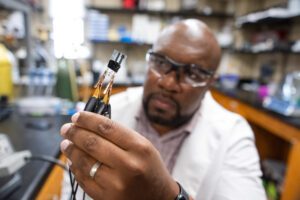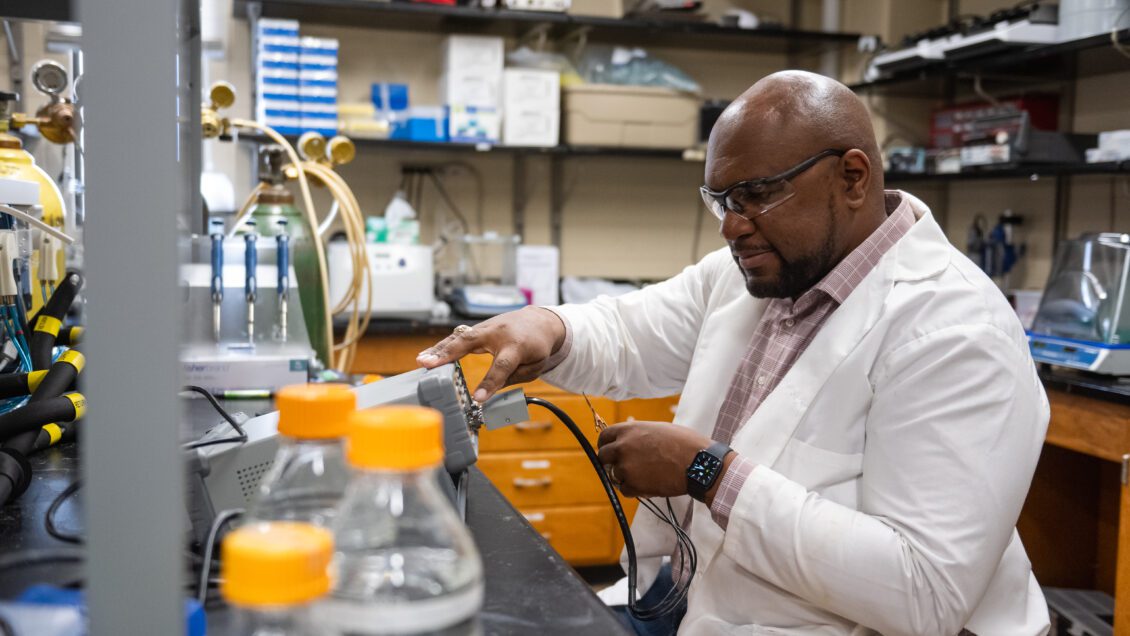A new sensor in development at Clemson University is designed to detect bacterial infections in wounds before they become serious and resistant to antibiotics, a problem affecting millions of Americans each year.
Jordon Gilmore, an associate professor of bioengineering, said his long-term goal is to make the sensor simple and inexpensive enough that it could be used by an at-home caregiver with no special medical training. It would provide answers about infection severity in as little as five minutes.

The sensor could eventually be combined with an imaging device and artificial intelligence to create a fully integrated diagnostic tool, he said.
“Someone could put a sensor on a wound and take a picture, and we could put that information together and determine at what stage of infection the wound is,” Gilmore said. “That is the goal, and that is important, because the climate of healthcare and health economics is moving a lot of wound care to home health. Fewer and fewer people are able to afford going to specialized wound care centers, so it’s really important that you have access to clear diagnostics.”
More than 2.8 million drug-resistant infections occur each year in the United States and lead to 35,000 deaths, mostly because antibiotics are ineffective against drug-resistant bacteria, Gilmore said. The healthcare costs hit $4.6 billion annually, he said.
The problem that patients and their doctors face is that bacteria form biofilms that protect themselves from antibiotic treatments. The cell-communication strategy that bacteria use to form biofilms is called quorum sensing.
The sensor that researchers envision would track quorum sensing to provide information on how quickly bacteria are growing and how fast biofilms are developing.
Part of what makes the sensor unique is that it would be flexible and able to measure electrical and chemical activity related to bacteria growth.
The sensor would help take some of the subjectivity out of how wounds are now diagnosed, Gilmore said.
Doctors now consider factors such as the wound’s size, depth and smell and classify it on a scale of 1-4 with the higher numbers signifying greater contamination. What might seem like a Class 2 wound to one doctor could be a Class 3 to another, Gilmore said.
The sensor would help eliminate some of the ambiguity by giving a quantitative measure of how the wound is doing, Gilmore said.
A better and quicker diagnosis would help doctors prescribe the correct antibiotics and dosage at the most opportune time, he said.
Gilmore is conducting the research as part of a CAREER Award from the National Science Foundation. He received his Ph.D. in bioengineering at Clemson and did postdoctoral research at the University before joining the faculty.
As part of the CAREER award, he is planning to start a 10-week virtual education program that would be focused on biomedical applications of artificial intelligence and aimed at veterans and non-traditional students at undergraduate institutions. The goal will be to expose them to undergraduate research through coursework, research and workshop experiences.
Gilmore said the idea was inspired by his undergraduate experience at The Citadel, where he received a Bachelor of Science in electrical engineering. Some of his most impressive classmates were veterans and active-duty personnel who had families and other commitments that prevented them from participating in experiences that would have helped prepare them for research and graduate school, he said.
“I want to be able to tap into that really amazing talent pool that they are,” Gilmore said.
Get in touch and we will connect you with the author or another expert.
Or email us at news@clemson.edu

